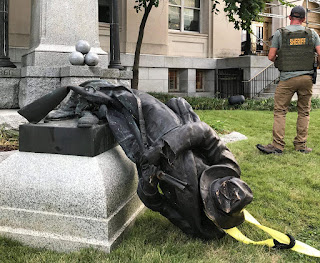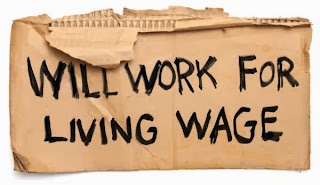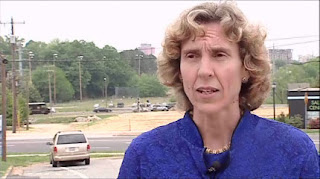

Bloomberg to Use Own Funds in Plan to Aid Minority Youth
The administration of Mayor Michael R. Bloomberg, in a blunt acknowledgment that thousands of young black and Latino men are cut off from New York’s civic, educational and economic life, plans to spend nearly $130 million on far-reaching measures to improve their circumstances.
The program, the most ambitious policy push of Mr. Bloomberg’s third term, would overhaul how the government interacts with a population of about 315,000 New Yorkers who are disproportionately undereducated, incarcerated and unemployed.
To pay for the endeavor in a time of fiscal austerity, the city is relying on an unusual source: Mr. Bloomberg himself, who intends to use his personal fortune to cover about a quarter of the cost, city officials said. A $30 million contribution from Mr. Bloomberg’s foundation would be matched by that of a fellow billionaire, George Soros, a hedge fund manager, with the remainder being paid for by the city.
Starting this fall, the administration said it would place job-recruitment centers in public-housing complexes where many young black and Latino men live, retrain probation officers in an effort to reduce recidivism, establish new fatherhood classes and assess schools on the academic progress of male black and Latino students.
Mr. Bloomberg plans to announce the three-year program in a speech on Thursday morning in Manhattan, in which he will declare that “blacks and Latinos are not fully sharing in the promise of American freedom.”
Even as crime has fallen and graduation rates have risen in New York over the past decade, city officials said that black and Latino men, especially those between ages 16 and 24, remained in crisis by nearly every measure, including rates of arrest, school suspension and poverty.
Although the populations of young white, black and Latino men in New York are roughly the same size, 84 percent of those in the city’s detention facilities and nearly all of those admitted to children’s and family services facilities are black and Latino youth, according to data from the Bloomberg administration. “The magnitude of the disparities is stunning,” said Linda I. Gibbs, the deputy mayor for health and human services. “It’s tragic.”
Mr. Bloomberg has put the weight of city government behind large-scale social change before, with public-health campaigns against smoking, sugary beverages and fatty foods.
But now, he is confronting a problem whose intractability and deep-seated causes have bedeviled policy makers for decades. And by focusing so heavily on a subset of city residents, he risks angering those unlikely to be helped by the new resources.
“The success rate, in general, is not that promising,” said Elijah Anderson, a professor of sociology at Yale, who has written extensively about urban issues.
The challenge, Professor Anderson said, will be persuading New York’s businesses to embrace these young men and offer them permanent employment after the city’s work is completed. “Companies have to be much more receptive to these young people and meet people like Bloomberg halfway,” he said.
The administration’s plan, developed after a year of study and debate, spans much of the city’s bureaucracy and multiple stages in the lives of the men it is trying to reach, beginning in middle school and ending with career counseling.
In interviews, aides to the mayor said the new measures emphasized the practical needs of the city’s most impoverished black and Latino men, many of whom are unable or unwilling to enroll in time-consuming education and training programs unless they are compensated, according to the officials.
So to promote remedial math and literacy classes in the morning, for example, the city would link them with paid internships in the afternoon. The internships would pay $7.25 an hour, but students would be paid only if they participated in the class.
“Working is a big motivator for these kids,” said Kristin Morse, the director of programs and evaluation at the city’s Center for Economic Opportunity.
For the first time, the Education Department would specifically tie the success of black and Latino boys — measured in part by test scores and graduation rates — to the grades the city gives schools each year. Those grades can determine whether a school remains open.
Much of the program is intended to prevent young men from entering or returning to the criminal justice system, which has long been a revolving door for many black and Latino youth.
Under the plan, the city’s Probation Department would open five satellite probation offices in neighborhoods with the highest crime rates — like East New York, Brooklyn; Jamaica, Queens; and the South Bronx — and inside community organizations that offer services from which the young men might benefit, like computer classes to help them prepare for a job or yoga classes to help them control anger. Currently, the city’s 524 probation officers work out of central offices in the five boroughs, often disconnected from the communities where the men whom they monitor spend most of their time.
To provide role models for the men on probation, the city said it would recruit from those neighborhoods 900 paid mentors, many of whom used to be troubled themselves, and promote a range of community service programs, like cleaning parks, removing graffiti and painting community centers, said Vincent N. Schiraldi, the city’s probation commissioner. He said the goal was to help New Yorkers see these young men “not as the scary guy in a North Face jacket hanging at the corner, but as men who can have a positive impact in their neighborhoods.”
Aides to the mayor described several of the measures as common-sense solutions that would cost little, if anything, to put in place. The city will try to reduce the barriers to employment for men with criminal convictions by instructing managers not to ask job applicants about those records in the first stage of the interview process.
The city would also encourage men to obtain driver’s licenses or state identification cards, after focus groups suggested that a large number of young black and Latino men did not have them, making it difficult for them to apply for jobs. “They didn’t know why they should have it or how to get it,” said Andrea Batista Schlesinger, a special adviser to the mayor, who organized the program.
Now the city plans to promote such identification in the paperwork given to high-school graduates and during interviews for summer jobs with city agencies.
Mr. Bloomberg urged his aides to study the experiences of black and Latino men in 2010. The aides said he was especially surprised and unsettled by statistics showing how frequently many of the men returned to the city’s prisons — an issue that became personal for the mayor after a stranger pulled him aside on the subway and told him his story: he was 45, black, a convict and unemployed. Mr. Bloomberg asked Dennis M. Walcott, now the schools chancellor, to check in periodically with the man, who was later arrested again.
A few weeks ago, Mr. Bloomberg called Mr. Soros, who has spent millions of dollars on programs to help black men in Baltimore and other cities, and invited him to lunch. The mayor asked the financier to match his donation for a program in New York, and Mr. Soros quickly agreed.
“When the mayor approached us,” Mr. Soros said, “he was knocking on an open door.”
View Larger Map
Sources: MSNBC, NY Times, PBS, Youtube, Google Maps







































































.jpg)























No comments:
Post a Comment